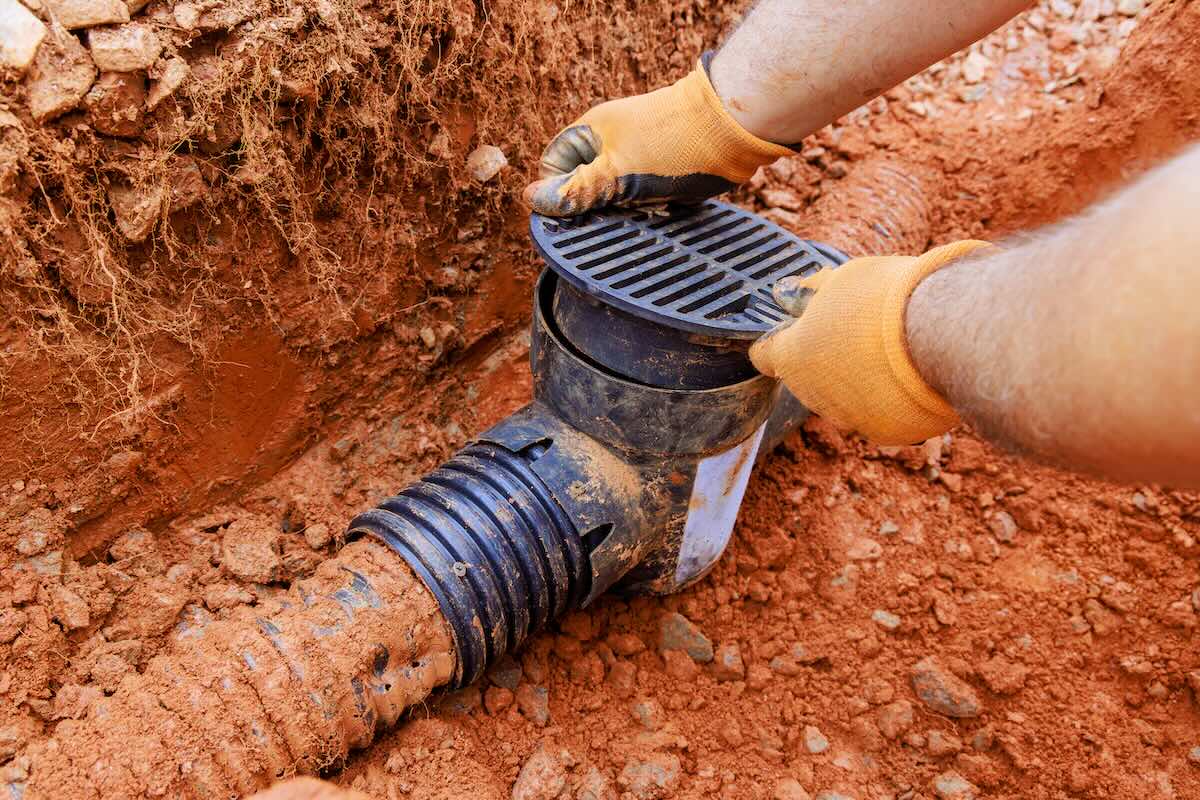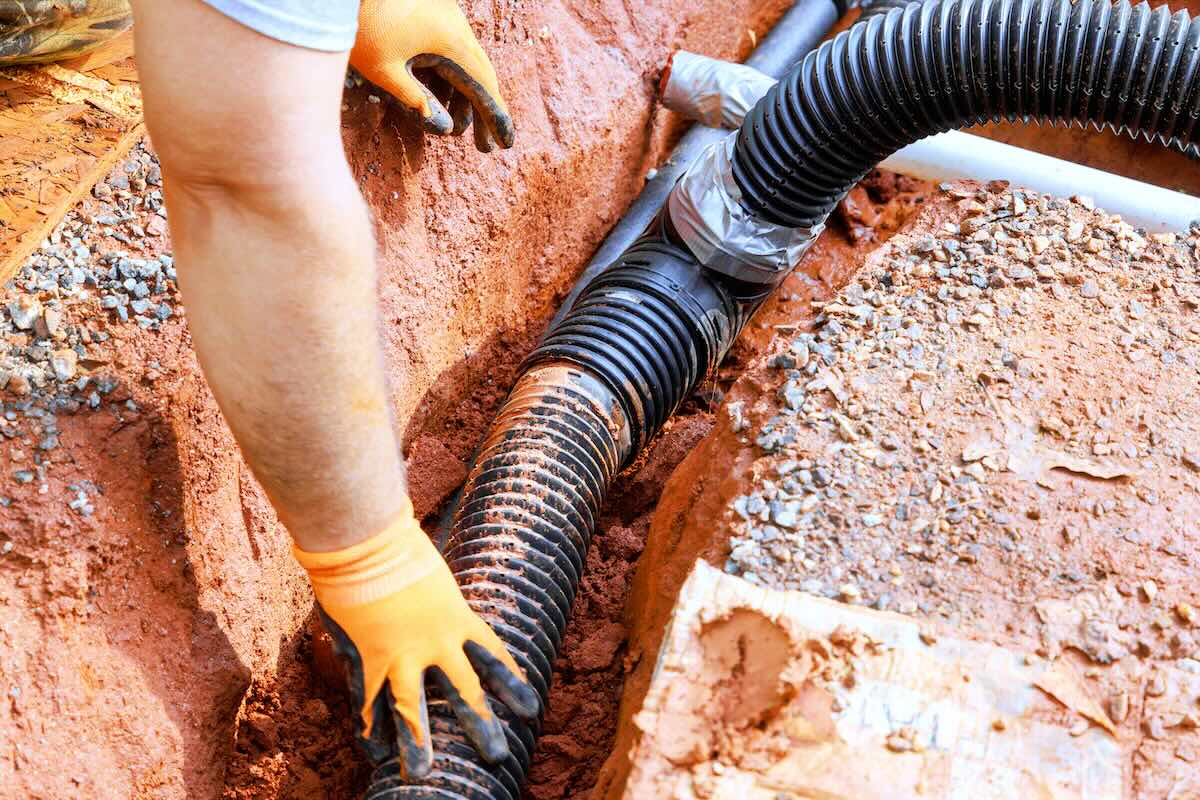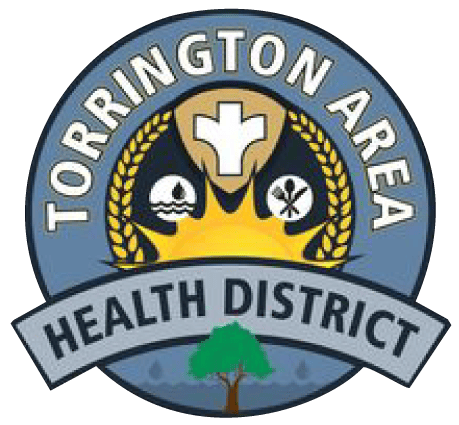General Steps to Constructing a Subsurface Sewage Disposal System
(General Steps, Repair, and Soil Testing)
The Torrington Area Health District is responsible for enforcing Connecticut’s Public Health Code regarding septic systems to ensure proper wastewater treatment and disposal, protecting our drinking water and the environment. Our work includes permitting, inspecting, and investigating complaints about on-site septic systems.
Steps to Constructing a Building with No Public Sewers or Public Water
- The lot owner hires a professional engineer to do soil testing and submit a site plan to the TAHD that shows all the details of how the lot will be developed.
- If inland-wetland soils exist on the lot, it may be necessary for the engineer to use a soil scientist to outline the wetland soils.
- The engineer submits two sets of his design and a set of the house plans to the TAHD with a check for the appropriate amount for review and approval.
- Once approved, the TAHD issues a sewage disposal permit to the lot owner.
- The lot owner brings his house plans with his site plan to other people that have jurisdiction, such as the zoning enforcement official, building official, inland-wetland commission, state highway, and utility companies.
- All necessary permits and approvals are obtained, and construction begins.
- The lot owner must hire a state-licensed septic system installer to construct his system. The installer takes out a permit to construct from the TAHD.
- The septic system is constructed and the TAHD inspects and approves it before it is covered.
- The TAHD signs off on the well permit and the well is drilled.
- The lot owner is responsible to test the well water and submit the results to the TAHD.
- The TAHD issues a Permit to Discharge for the septic system and approves the water supply if all requirements are satisfied.
- All other inspections and approvals are obtained in a timely manner.

On-site Subsurface Sewage Disposal Systems
(Septic Systems)
One of the major responsibilities of the Torrington Area Health District is the enforcement of the sections of the Connecticut Public Health Code involving the disposal of wastewater by a septic system. Various system types presently exist, addressing both commercial and residential uses in areas where there are no public sewers. These various types have evolved over the years as a result of research, development, and experimentation with the diverse soil conditions found throughout Connecticut.
Within the TAHD, whenever a parcel of land is being considered for new construction using a septic system, it is required that the services of an independent professional engineer be contracted to determine the suitability of the parcel for the intended use. Such feasibility is accomplished by site testing involving both percolation and deep-hole tests as directed by the engineer and overseen by a Health District representative. The engineer is then responsible for showing the details of the system on a site plan in compliance with all state and local rules, regulations, and ordinances, including but not limited to proper separating distances to lot lines, watercourses, inland wetlands, wells, swimming pools, buildings, groundwater, and bedrock. Prior to the issuance of a septic permit, the sanitary design must first be submitted to this department for review and approval.
Necessary applications may be downloaded, although they will not be accepted without the required fees.
Please view the TAHD office list for contact information. Click within your town boundary to receive the name and contact information of the Sanitarian providing services for your town.

Repair and Replacement of Existing Septic Systems
New Onsite Septic Systems, Lot development (B100a)
When considering new construction that will utilize a septic system within the TAHD’s jurisdiction, engaging an independent professional engineer is mandatory to evaluate the land’s suitability. This evaluation involves site testing, specifically percolation and deep-hole tests, conducted under the engineer’s direction and the Health District’s supervision. Subsequently, the engineer must detail the proposed system on a site plan, ensuring adherence to all applicable state and local rules, regulations, and ordinances. These include, but are not limited to, maintaining proper separation distances from property boundaries, watercourses, inland wetlands, wells, swimming pools, buildings, groundwater, and bedrock. The sanitary design must be submitted to the Health District for review and approval before a septic permit can be issued.
Repair and replacement Onsite Septic Systems
Repairing or replacing a current septic system is similar to a new system. The Applicant will hire an independent professional engineer and/or a septic system installer currently licensed in the State of Connecticut. Soil testing must be conducted under the engineer’s direction and the Health District’s supervision. A septic system design is developed based on soil test data and other design criteria. A septic system permit is then issued based on the specifications shown on the plan. Unlike a septic system for new construction, exceptions to the Public Health Code may be granted to repair a septic system due to on-site limitations. In most cases the building owner must contract the services of a septic system installer currently licensed in the State of Connecticut to perform the septic system installation.
